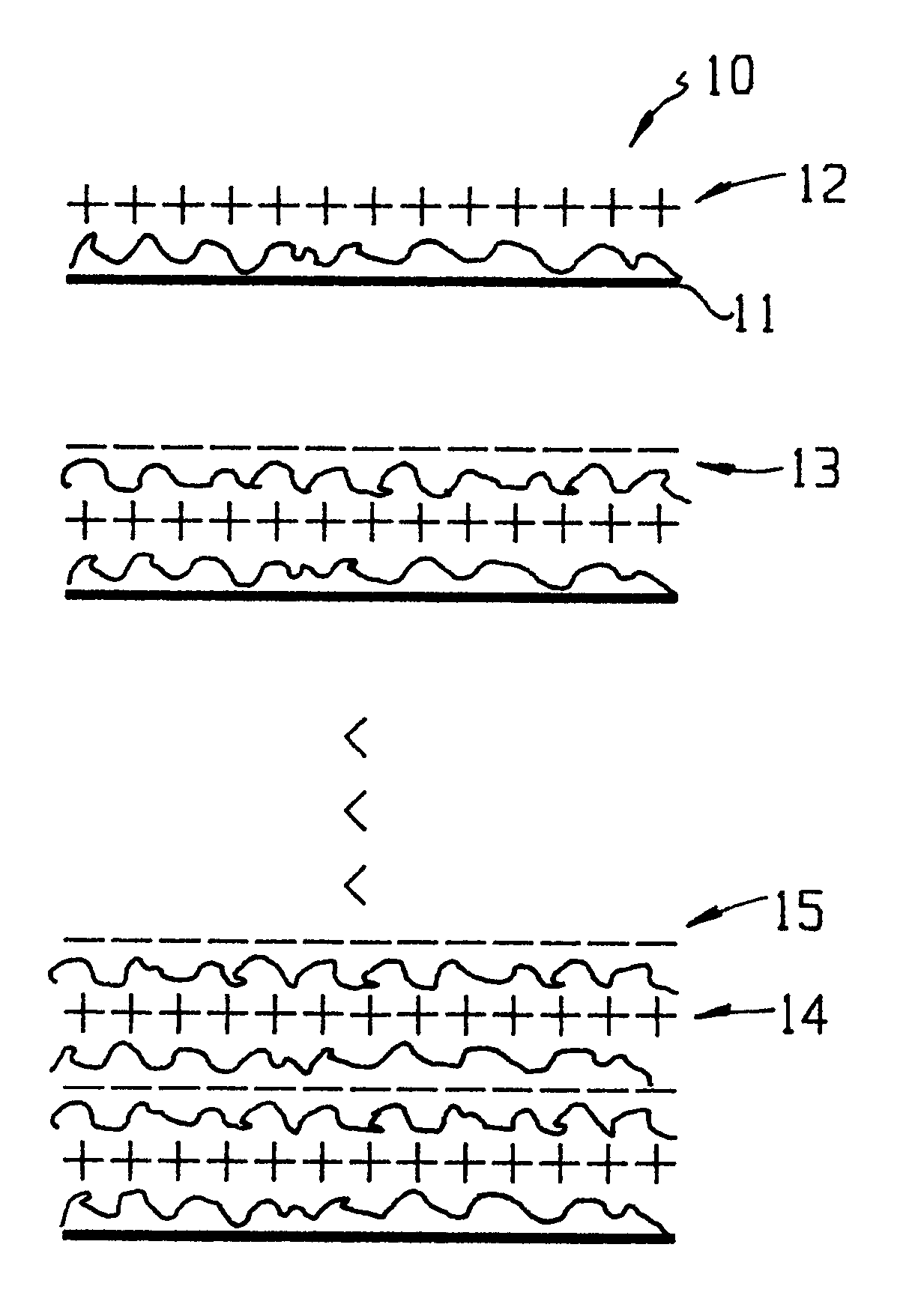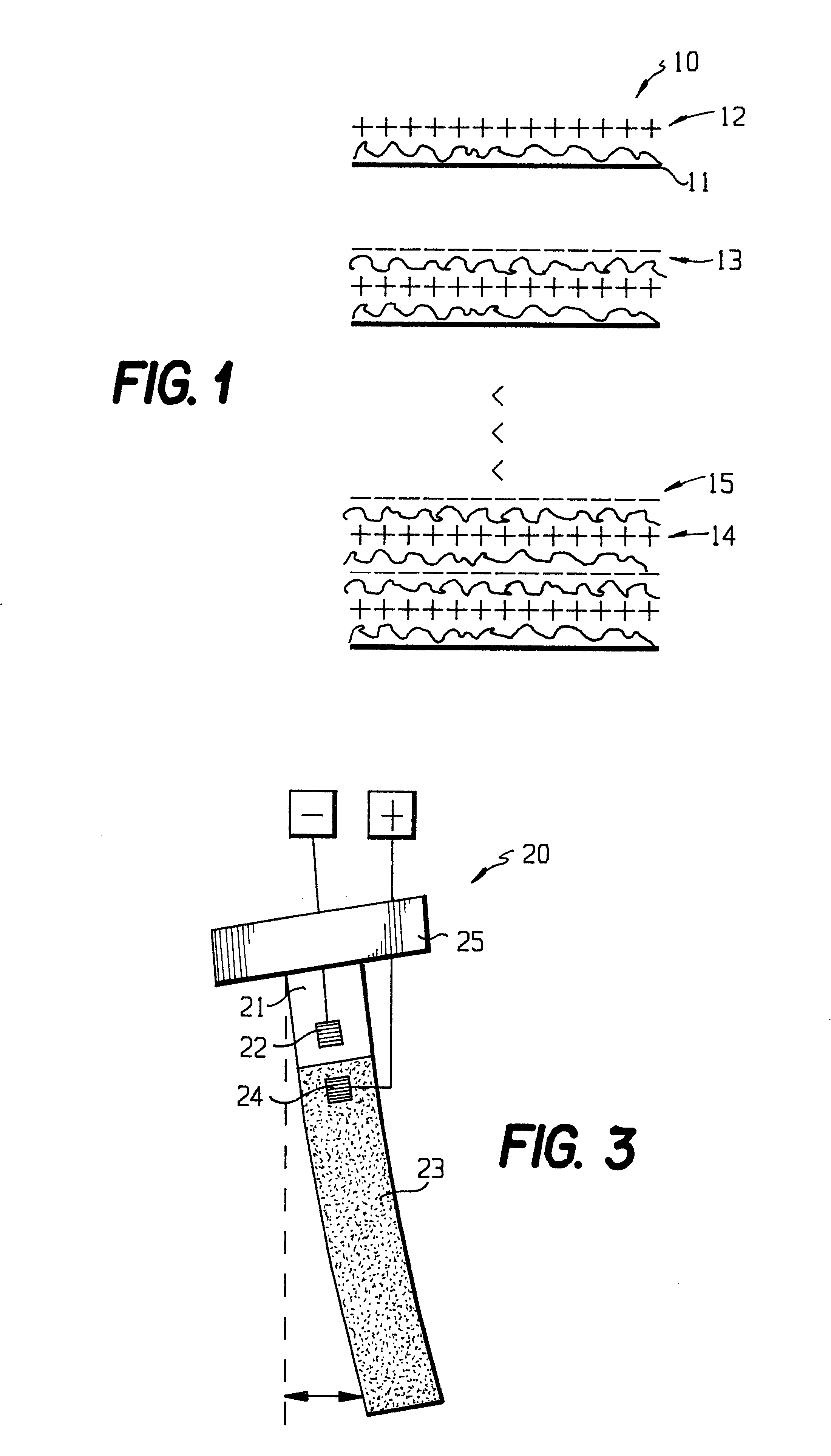Electrostrictive and piezoelectric thin film assemblies and method of fabrication therefor
a piezoelectric and thin film technology, applied in the field of thin film assembly, can solve the problems of lack of ability to effect complete molecular orientation, no method that can be used to form such active films directly, and electric potential differences
- Summary
- Abstract
- Description
- Claims
- Application Information
AI Technical Summary
Benefits of technology
Problems solved by technology
Method used
Image
Examples
Embodiment Construction
An electrostrictive and piezoelectric thin film assembly comprising poly(sodium 4-styrenesulfonate) ("PSS") and poly(diallyldimethylammonium chloride)("PDDA") was prepared by the ESA process. PSS was employed because its charged --SO.sub.3.sup.- functional group effectively gives it a noncentrosymmetric dipolar structure. PDDA was used as the counter ion to self-assemble the PSS. Both PSS (M.sub.w =70,000) and PDDA (M.sub.w =.about.400,000.about.500,000, 20 wt % in water) are commercially available from Aldrich Chemical Co.
The fabrication of the PSS / PDDA monolayer and multilayer films was carried out as follows. The substrates used were single-crystal p-111 silicon, quartz, and indium tin oxide ("ITO")-coated glass. Silicon and quartz substrates were pretreated with a 30:70 mixture of 30% hydrogen peroxide (H.sub.2 O.sub.2) and concentrated sulfuric acid (H.sub.2 SO.sub.4) for 30 minutes at room temperature, then rinsed extensively with Milli-Q water under ultrasonic agitation. The ...
PUM
| Property | Measurement | Unit |
|---|---|---|
| thickness | aaaaa | aaaaa |
| thickness | aaaaa | aaaaa |
| thickness | aaaaa | aaaaa |
Abstract
Description
Claims
Application Information
 Login to View More
Login to View More - R&D
- Intellectual Property
- Life Sciences
- Materials
- Tech Scout
- Unparalleled Data Quality
- Higher Quality Content
- 60% Fewer Hallucinations
Browse by: Latest US Patents, China's latest patents, Technical Efficacy Thesaurus, Application Domain, Technology Topic, Popular Technical Reports.
© 2025 PatSnap. All rights reserved.Legal|Privacy policy|Modern Slavery Act Transparency Statement|Sitemap|About US| Contact US: help@patsnap.com



